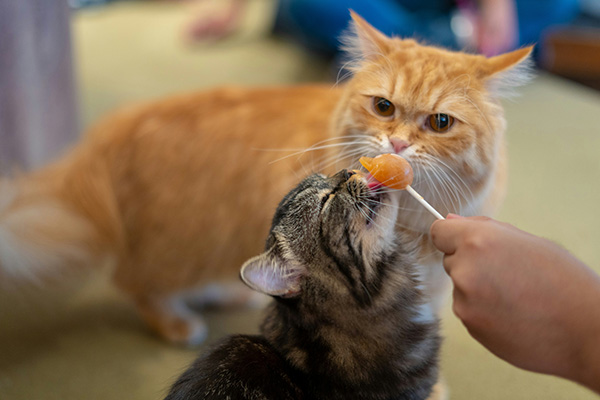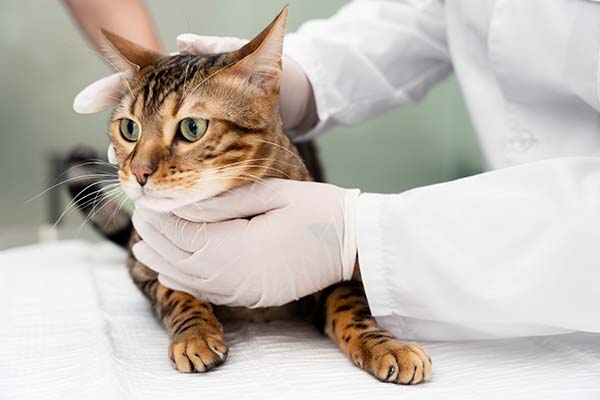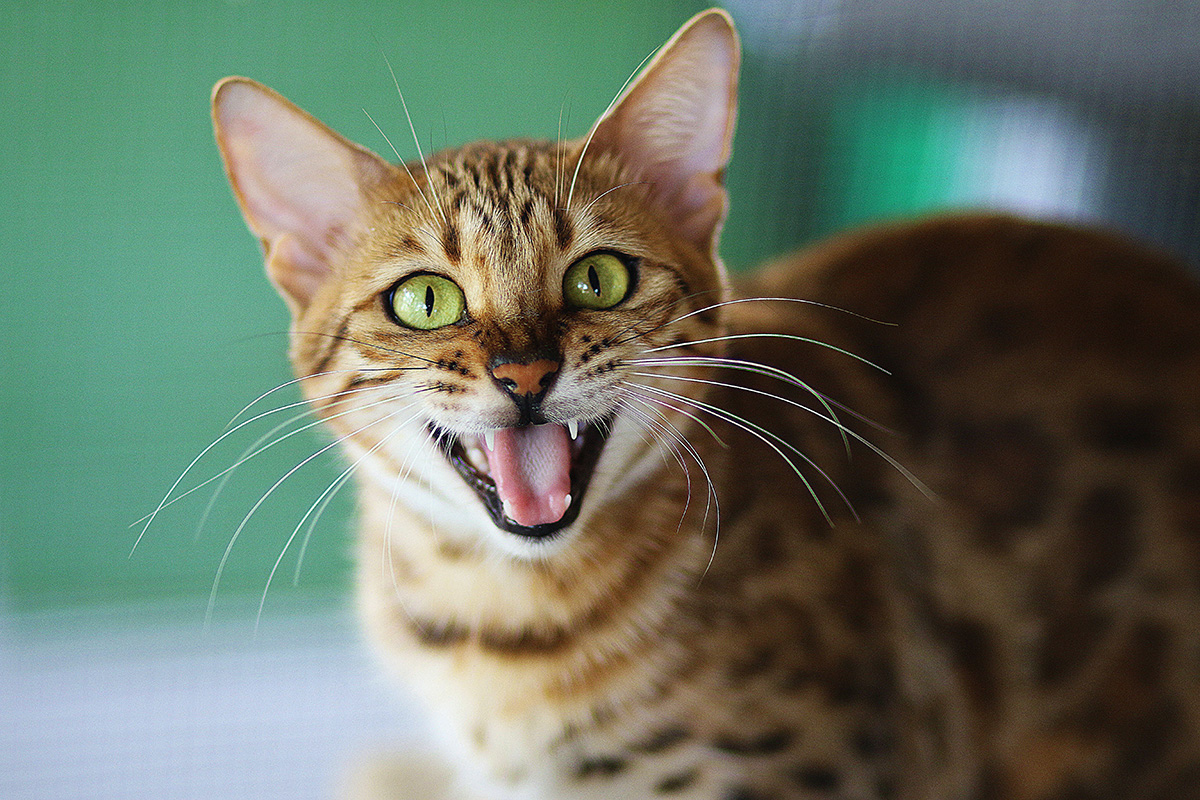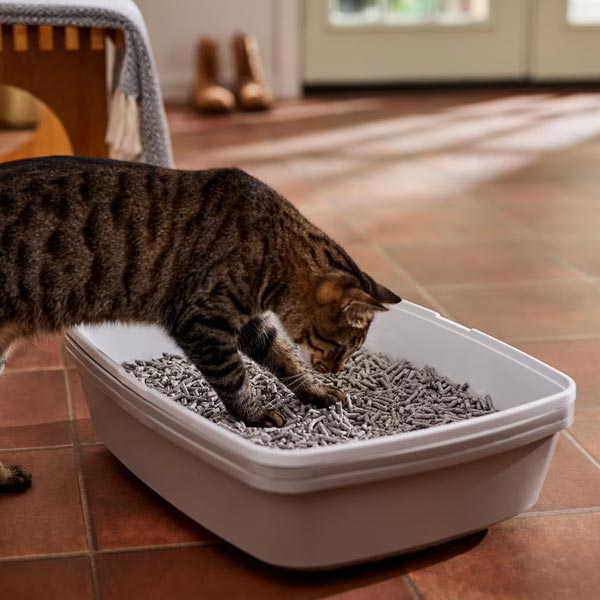Stress in cats can often be as complex and varied as in humans, manifesting through a range of behaviors and affecting their overall well-being. Whether triggered by environmental changes, new additions to the household, or even shifts in their daily routine, stress can manifest in various ways—from hiding and decreased appetite to excessive grooming and aggression.
In this blog post, we'll explore the common causes of feline stress, how to spot the subtle signs, and provide effective strategies to help alleviate your stressed cat.
What causes stress in a cat- 8 Common Causes
Environmental Changes

While most cats are very adaptable, other cats can be more sensitive. Environmental changes can significantly impact a cat's stress levels, often manifesting through both behavioral and physical signs. Many cats thrive on predictability and are creatures of habit. Any changes to their regular environment, like relocating to a new home, rearranging furniture, or adding new members (whether human, another cat, or animal) to the household, can induce anxiety and stress.
These changes can lead cats to exhibit stress indicators such as hiding more than usual, decreased appetite, excessive grooming, or even aggression. Other signs might include urinating outside the litter box, vocalizing more than usual, or changing interaction levels with humans or other pets.
To mitigate these stressors, it's crucial to introduce changes gradually. When moving or rearranging your home, try to keep some elements familiar to your cat, such as beds, toys, and other personal items. Slowly acclimate your cat to new people or pets by controlled introductions, ensuring they have safe spaces to retreat to if they feel overwhelmed. Use pheromone diffusers, which can help calm your cat by emitting synthetic pheromones that mimic the calming pheromones mother cats produce. Providing hiding spots, cat trees, and high perches in various locations gives your cat a sense of control and security. Lastly, maintain a consistent routine with feeding, play, and cuddling to give your cat a sense of stability.
Routine Disruptions

Routine disruption can significantly stress cats, as they are creatures deeply entrenched in habit and familiarity. Changes such as varying feeding times, altering interaction schedules, or shifting sleeping areas can unsettle a cat, manifesting stress in several observable ways. Common signs include changes in eating habits, avoidance of social interactions, increased sleeping, or litter box issues. Cats might also express their discomfort through excessive grooming or display symptoms of anxiety, such as pacing or vocalizing more than usual.
To mitigate stress caused by routine disruptions, try to introduce changes gradually. If a shift in feeding times is necessary, adjust the schedule in small increments rather than all at once. To offer a sense of stability and maintain consistency in other aspects of their routine, keep their bedding and toys in the same places, even if other aspects of their environment must change.
Providing extra comfort and reassurance during times of change is also crucial. Spend more quality time with your cat, offering additional play sessions and calm interaction to help reassure them. Additionally, consider using environmental enrichments like pheromone diffusers to help soothe your cat and reduce anxiety.
Social Stressors
Social stressors, such as introducing new pets, changes in the household population, or even conflicts within a multi-cat environment, can significantly impact a cat’s stress levels. Cats are territorial and often sensitive to changes in their social environments, which can lead to stress-related behaviors. Signs of social stress in cats include hissing, growling, avoidance, hiding more frequently than usual, changes in eating and toileting habits, or increased aggression towards other pets or humans.
Addressing social stressors involves a careful and considerate approach to any changes in the household. When introducing a new pet, use controlled environments to manage initial interactions gradually. To reduce competition and territorial conflicts, ensure each pet has their own resources, including separate food bowls, litter boxes, and resting areas.
During times of change such as introducing new members or having frequent guests, it's important to create a secure, quiet area where your cat can retreat. Consistently maintaining routines provides stability. Pheromone diffusers can also be utilized to create a calming atmosphere and reduce anxiety. Ensuring that each cat feels they have a territory and time for individual attention can also alleviate tension and stress.
Restricted Access
Restricted access to essential areas or resources can be a significant source of stress for cats, who are naturally curious and territorial animals. When cats are barred from certain parts of their environment or cannot access their usual comfort spots, it can lead to feelings of insecurity and anxiety. This type of stress can manifest in various behaviors such as vocalization (meowing or yowling at unusual levels), scratching at barriers, attempts to escape, increased aggression, or even withdrawal and hiding.
To address stress caused by restricted access, it's important to ensure your cat has free and safe access to all necessary areas of your home. If certain areas must be off-limits, provide suitable alternatives to meet your cat's needs. For example, if a particular room needs to be restricted, set up another area with similar comforts, such as bedding, toys, and perches.
It's crucial to ensure consistent access to essential resources like food, water, and litter boxes. Ensure that these are always available in locations your cat can easily reach, and consider providing multiple options in different areas of your home to prevent any resource-based stress. Environmental enrichments like additional climbing structures, scratching posts, and interactive toys can also help compensate for restricted areas and keep your cat engaged and mentally stimulated.
Health Issues

Image by Freepik
Knowing and addressing your cat's physical health is important before it becomes chronic stress. Health issues are a significant source of stress for cats and can profoundly affect their overall behavior and well-being. Physical discomfort, pain, or illness can make cats feel vulnerable and anxious, leading to stress-induced behaviors.
Signs that your cat might be stressed due to health issues include increased hiding, decreased appetite, changes in grooming habits (either neglecting to groom or grooming excessively to the point of causing bald spots), and elimination outside the litter tray. Behavioral changes such as increased aggression or unusually withdrawn behavior can also indicate underlying health problems.
Identifying signs of stress due to health issues early on is key, and seeking prompt advice from a veterinarian is crucial. Regular veterinary check-ups can aid in detecting and addressing health issues before they escalate into significant stressors. Treatment may entail medication, dietary adjustments, or other interventions as advised by your veterinarian.
In addition to medical treatment, creating a comfortable, low-stress environment is crucial. Ensure your cat has a quiet, cozy place to retreat, maintain a consistent routine, and consider using calming products like pheromone diffusers to help ease anxiety. By managing both the physical and environmental factors, you can help reduce stress and promote a happier, healthier life.
Lack of Stimulation

Lack of stimulation is a common cause of stress in cats and can lead to various behavioral issues. Cats are normally curious and active creatures, needing consistent mental and physical stimulation to maintain their health and happiness. Signs that your cat may suffer from a lack of stimulation include overgrooming, lethargy, excessive sleeping beyond the usual cat naps, and even destructive behaviors like scratching furniture or increased aggression.
To address this issue, enrich your cat's environment and daily routine. Providing a variety of toys that encourage hunting-like activities can keep your cat engaged—rotating these toys regularly can maintain their interest. Interactive toys, such as laser pointers and feather wands, stimulate both their mind and body through play and mimic natural predatory behaviors.
Additionally, setting up climbing structures like cat trees and adding perches on windowsills can allow your cat to explore different heights and watch the world from a safe vantage point, which is mentally stimulating. Engaging in daily play sessions with your cat helps alleviate boredom and strengthens the bond between you and your pet.
Fear and Anxiety

Fear and anxiety are significant stressors in cats, manifesting in both overt and subtle behaviors. This includes unfamiliar cats intruding into the garden or home, a new dog, or moving to a new home.
When cats experience fear or anxiety they may exhibit signs such as hiding, hissing, increased vocalization, trembling, or even aggression. Physiological signs could include dilated pupils, rapid breathing, or excessive grooming. These reactions are often prompted by a perceived threat or unfamiliar circumstances, such as loud noises, unfamiliar individuals or animals, or alterations in their environment.
Addressing fear and anxiety in cats requires a gentle and patient approach. First, identify and, if possible, eliminate or reduce the source of stress. Establish a secure space within your home where your cat can seek refuge when feeling overwhelmed. This area should be quiet, secluded, and cozy, with access to water and a litter box.
Gradual desensitization can also be beneficial. For example, if your cat is afraid of strangers, slowly introduce them to new people in a controlled and calm manner. Encourage calm behavior through positive reinforcement, utilizing treats and affection to associate new experiences with positive outcomes.
Moreover, it's worth considering seeking advice from a veterinarian or a feline behaviorist. They can offer guidance tailored to your specific situation and may recommend therapeutic options like pheromone diffusers or, in some cases, medication to help manage anxiety. Regular interaction and play can also help to alleviate stress and build confidence in anxious cats.
Limited Resources

Limited access to essential resources such as food, water, litter trays, or resting areas can significantly stress cats, as these are fundamental to their well-being and comfort. Signs that a cat is stressed by resource scarcity might include aggression towards other pets, overeating or not eating enough, restlessness, or inappropriate elimination outside the litter box. These behaviors stem from the cat’s need to compete for resources or anxiety about insufficient access.
To effectively mitigate stress stemming from limited resources, make sure each cat has its own designated food and water bowls, litter box, and preferred resting areas. It's commonly suggested to have one additional litter box than the number of cats in the household. Placing these resources in quiet, separate areas can prevent competition and reduce stress. Make sure the cats like the litter box style, as some cats are reluctant to go through the cat flap.
Moreover, keeping these resources clean and inviting promotes their use and can help alleviate tension. Regularly cleaning litter boxes, refreshing water, and ensuring food is available consistently help establish a routine that can make cats feel secure and less anxious.
For homes with multiple cats, spatial rearrangement might be necessary to give each cat a sense of territory and security. Observing your cats' behavior and adjusting their environment to minimize competitive encounters can lead to a more peaceful, stress-free home for your feline friends.
